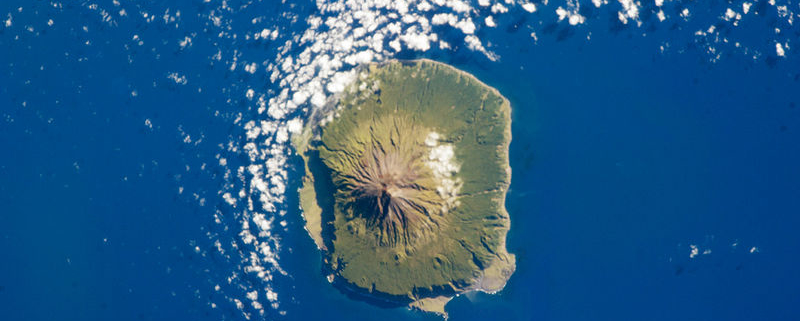Tristan da Cunha is both a remote group of volcanic islands in the south Atlantic Ocean and the main island of that group. It is the most remote inhabited archipelago in the world, 2,000 kilometers (1,200 mi) from the nearest inhabited land, Saint Helena, and 2,400 kilometers (1,500 mi) from the nearest continental land, South Africa. It is 3,360 kilometers (2,090 mi) from South America. The territory consists of the main island, Tristan da Cunha, which has a north-south length of 11.27 kilometers (7.00 mi) and an area of 98 square kilometers (38 sq mi), and the smaller, uninhabited Nightingale Islands and the wildlife reserves of Inaccessible and Gough islands. As of January 2017, the main island has 262 permanent inhabitants. The other islands are uninhabited, except for the personnel of a weather station on Gough Island.
Tristan da Cunha is part of the British overseas territory of Saint Helena, Ascension, and Tristan da Cunha. This includes Saint Helena and near-equatorial Ascension Island, some 3,730 kilometers (2,318 mi) to the north of Tristan.
Capital: Edinburgh of the Seven Seas
Currency: Pound sterling
Timezone: UTC
Corporate tax rate: 10-13% Territorial tax system. Only profits derived from Tristan de Cunha are taxed.
Personal tax rate: 10-13% Territorial tax system. Only profits derived from Tristan de Cunha are taxed.
Capital gains tax: 10-13% Territorial tax system. Only profits derived from Tristan de Cunha are taxed.
VAT: N/A
Tax residence: Resident: 4 months of presence per year: Only profits derived from Tristan de Cunha are taxed. Permanent Resident: 5 years of residency. Only profits derived from Tristan de Cunha are taxed.
CFC Rules: No
Remote management:![]()
Corporate taxation:![]()
Personal taxation:![]()
Cost of living:![]()
Quality of living:![]()
Safety of living:![]()
Bureaucracy:![]()
Reputation:![]()


 istockphoto
istockphoto Istockphoto.com VelhoJunior
Istockphoto.com VelhoJunior